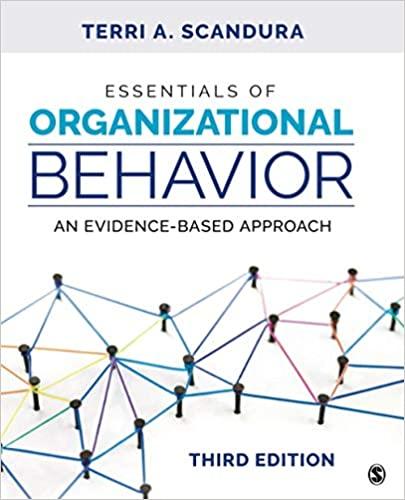Diversity climate is defined as employees shared perceptions of the policies, practices, and procedures that implicitly and
Question:
Diversity climate is defined as “employees’ shared perceptions of the policies, practices, and procedures that implicitly and explicitly communicate the extent to which fostering and maintaining diversity and eliminating discrimination is a priority in the organization.”74 A review found that positive diversity climates in organizations are related to job satisfaction and perceptions of fairness. Moreover, research shows that multiple sources of information are used to assess an organization’s actual commitment to diversity. For example, one study found that when a company’s projected diversity image is reinforced by demographic heterogeneity in its workforce, potential applicants are more likely to perceive the company as being authentically committed to diversity. Moreover, in a follow-up study, the researchers found that subjects who perceived the organization’s diversity climate as authentic were more likely to engage in helping new employees. The influence of diversity climate on turnover intentions was studied in a sample of managerial employees in a national retail organization.75 Results from this sample of 5,370 managers found the effect of a pro-diversity climate was strongest among black employees. Contrary to the hypotheses, however, white men and women exhibited slightly stronger effects of diversity climate on turnover intentions, suggesting that diversity climates positively impact all employees. Research suggests that there are different types of diversity climates. Policy-focused diversity climates are characterized by a concern for diversity, primarily from a policy perspective. For example, an organization has a code of conduct for diversity practices. Awareness-focused diversity climates focus on diversity for access and legitimacy in new markets but have low integration of diversity into work processes. Core principles are not defined, and employees are free to decide how to work together based on norms of cooperation and harmony. Employees are encouraged to learn about other cultures. Finally, engagement-focused diversity climates inform and enhance work processes based on an assumption that cultural differences give rise to different insights. A limited set of core values considered central to the organization is emphasized, but otherwise, differences are allowed to flourish. As a result, members not only maintain their culture of origin but also learn about other cultures. Research found that the engagement-focused diversity climate increases team performance due to increased sharing of knowledge, insights, and alternative views. Team members oscillated between cooperation and assertiveness, which was supported by an engagement-focused diversity climate....
Discussion Questions
1. Explain why diversity climate is reinforced by having a diverse workforce. Would a diverse workforce influence your interest in working for a particular organization? Explain.
2. Have you experienced diverse viewpoints within a team discussion? If so, explain how knowledge sharing influenced the team performance.
3. Describe ways that organizations can promote engagement-focused diversity climates.
Step by Step Answer:

Essentials Of Organizational Behavior An Evidence-Based Approach
ISBN: 9781544396781
3rd Edition
Authors: Terri A. Scandura





